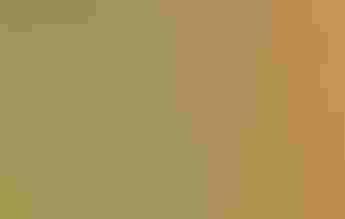
La página que intenta visitar sólo está disponible en inglés. ¡Disculpa!
The page you are about to visit is currently only available in English. Sorry!

Growing bird-friendly native plants is a great way to learn about birds. At the same time it can help you attract and protect the birds you love while making your space beautiful and improving your environment.
Here’s an activity that involves a simple DIY project to make a pot for starting seeds and then watching seeds sprout and grow into mature plants.
You’ll need:
Planning ahead
1. Before you start, choose your seeds. This will involve doing some research to identify a native plant for your area that can be sprouted from seeds. Go to Audubon’s Native Plants Database and enter your zip code (email address not required). Use the filters to select “Annual/Per.” (annual and perennial plants). This will show you flowering native plants. From the list, choose a plant for which you can find seeds locally or by ordering.
2. Practice making a newspaper pot. Review this photo sequence on how to make a pot and practice so you’re ready to demonstrate for and guide your kids. Note: An extra step that will help hold the pot together is using a piece of masking tape to secure the folds on the bottom. You can also use a cardboard roll from toilet paper or paper towels if you have one handy, bolstered with paper on the bottom.
Make seed-starting pots and plant your seeds
1. Let your children watch you make a newspaper pot.
2. Now let them make their own. Encourage them to figure things out, but give them help as needed to avoid frustration.
3. Next, let kids fill their pots (or cardboard tubes) with potting soil, packing it down carefully to avoid damaging the pot.
4. Plant the seeds! Depending on the kind of seeds, have kids plant one or more in each pot, following instructions on the seed packet regarding depth.
5. Place the pots in a waterproof tray or pan and spray them gently with water. The soil should be wet throughout but not soggy. Place the tray/pan in a sunny window away from cold drafts.
6. Check the pots daily to look for sprouts. When the seedlings are a few inches tall, they can be transplanted, newspaper pots and all, to the ground or a larger container. Check the seed packet for information about how much sun the plants will need and place the pots accordingly.
7. Watch the plants grow and flower! If you are able to plant or place them outside, watch to see if birds, insects, or other critters are attracted to them.
Bonus!
Grow plants from kitchen scraps! Sometimes what’s left after you’ve made a salad or enjoyed a piece of fruit can be used to grow a new plant. This can be a great opportunity to share the gratification of gardening with your family, and in most cases you can grow these plants inside. Here are just some items that are easy to grow from kitchen “leftovers.” There are plenty of others.
- avocado
- key lime
- pineapple
- cherry
- celery
- lettuce
- basil
- potato
- onions
- pepper
- tomato
You can easily find instructions for each online after a specific search (e.g., “how to grow avocado seed”) or a general one (e.g, “how to grow plants from kitchen scraps”).
***
Audubon Adventures is an environmental science curriculum, developed by professional educators, that presents standards-based science content about birds and their habitats. It includes four-page magazines (in PDF format) just for kids with lively content, illustrations, and photographs on a variety of topics. Explore more activities, games, and lessons about birds and nature at the Audubon Adventures website.